Review: 'Wednesday' (Season 2)
The new season is darker and bolder, but its biggest change to the Addams Family formula remains its most fascinating and divisive choice.
She’s back. Wednesday Addams, that grim and morbid daughter of the outrageously weird Addams family, is ready for another year at Nevermore Academy. There will be dark secrets, grisly murders, occultism, and maybe a bit of light ritual sacrifice on the side.
Along with her trusty companion, the animated severed hand, Thing, she is ready to solve—or make worse, depending on who you ask—any mysteries the school year has to offer.
You can almost hear that iconic, finger-snapping theme music now, can’t you?
Created by showrunners Alfred Gough and Miles Millar (of Smallville fame), with director and executive producer Tim Burton adding his signature gothic style, the series follows Wednesday Addams (played by Jenna Ortega) as she enrolls at the Nevermore Academy for Outcasts.
Before we continue, please be adviced that since this is a review for the second season of Wednesday, it will contain a few very light spoilers—nothing you won’t see in the trailers. But being a second season of a hit Netflix show, it will contain heavy spoilers from the first season, as it contains a short recap. So if you haven’t watched that yet, go do so. It won’t hurt. Much.
In the first season, Wednesday solved the mystery of the grisly murders plaguing the school. She confronted Tyler Galpin (played by Hunter Doohan), who turned out to be the monstrous Hyde, along with its sinister handler, Laurel Gates (played by Christina Ricci, who you might remember played Wednesday in the 90s), all while coming to grips with her own emerging psychic abilities. That story continues in season 2.
But before we dive into the new season, a quick history class is in order. So, let’s blow the dust off our oldest, most spider-web-covered books and take a look at where this ghoulish, yet lovable family came from.
Our story begins way back in 1938. In the pages of The New Yorker, cartoonist Charles Addams started drawing a series of one-panel, satirical gags about a family of creepy aristocrats who were, at the time, unnamed. They were the exact opposite of the perfect American family: a wealthy, weird, and morbid bunch who had no idea that the rest of the world found their hobbies—like playing with guillotines or setting each other on fire—to be a little strange.
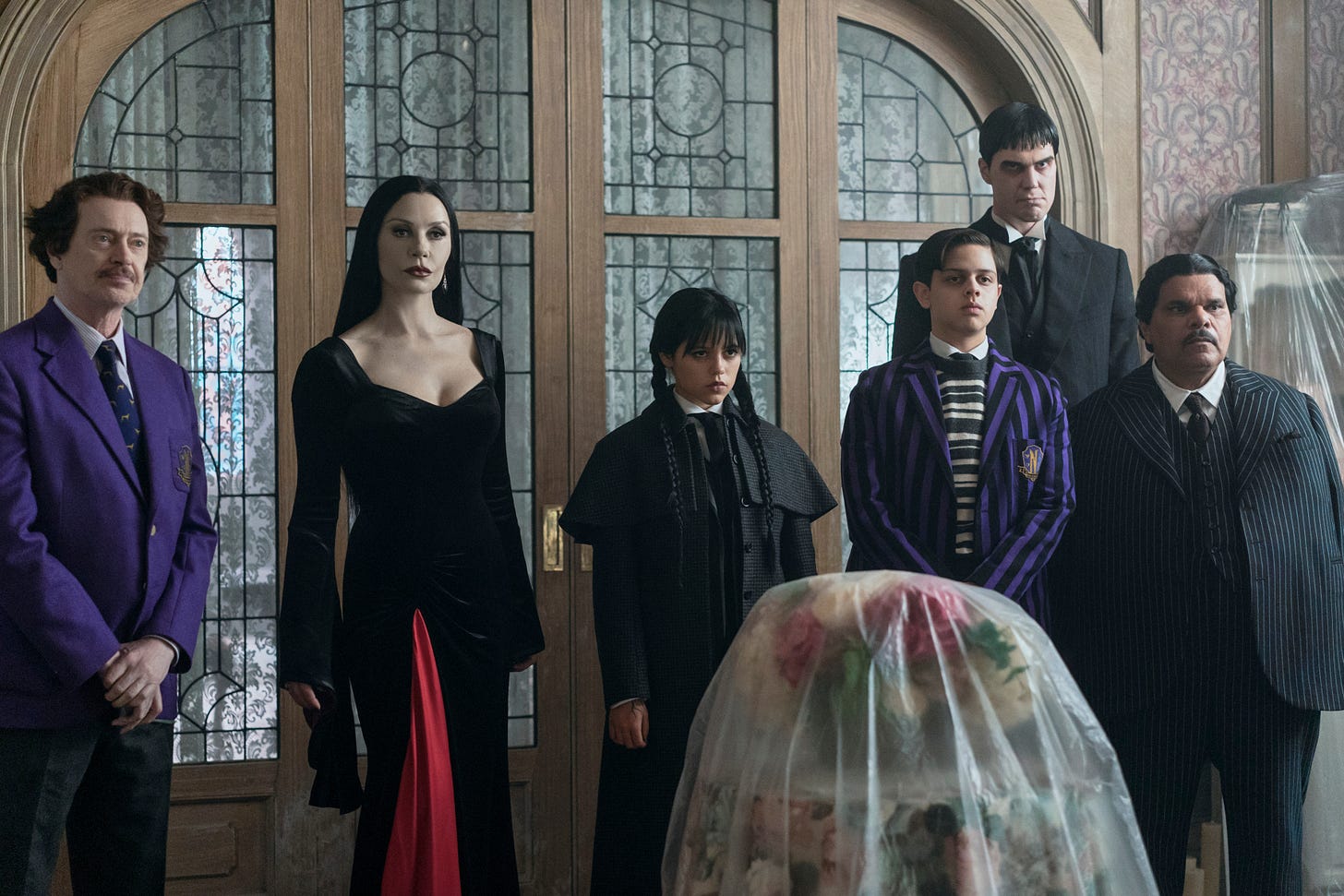
In time, television came knocking. From 1964 to 1966, the black-and-white sitcom The Addams Family introduced them to the world and made them household names. This is when they were finally given their classic names: Gomez and Morticia; their children Wednesday and Pugsley; Uncle Fester; Grandmama; the family’s giant, Frankenstein’s monster-inspired butler, Lurch; and of course, the disembodied hand-servant, Thing. The show established the family’s most important trait: they were a loving, supportive bunch, even if their idea of an ideal family picnic often involved a graveyard.
Fast forward to the 1990s, when the family made a spectacular big-screen comeback with two hit movies: The Addams Family (1991) and Addams Family Values (1993). Director Barry Sonnenfeld found the perfect mix, combining the darker humor of the original cartoons with the warmth of the TV show, featuring an all-star cast that included Anjelica Huston as Morticia, Raul Julia as Gomez, Christopher Lloyd as Uncle Fester, and Christina Ricci as Wednesday. These films introduced the family to a whole new generation of fans and cemented their place in pop culture history.
After the success of the movies, the Addams Family was everywhere. They popped up in cartoons, direct-to-video movies, another TV show, and even a hit Broadway musical in 2010. Some of these were better than others, but it proved the family had an enduring appeal that transcended generations. Most recently, two animated films in 2019 and 2021 brought the family back to their roots, with character designs inspired by Charles Addams’s original drawings.
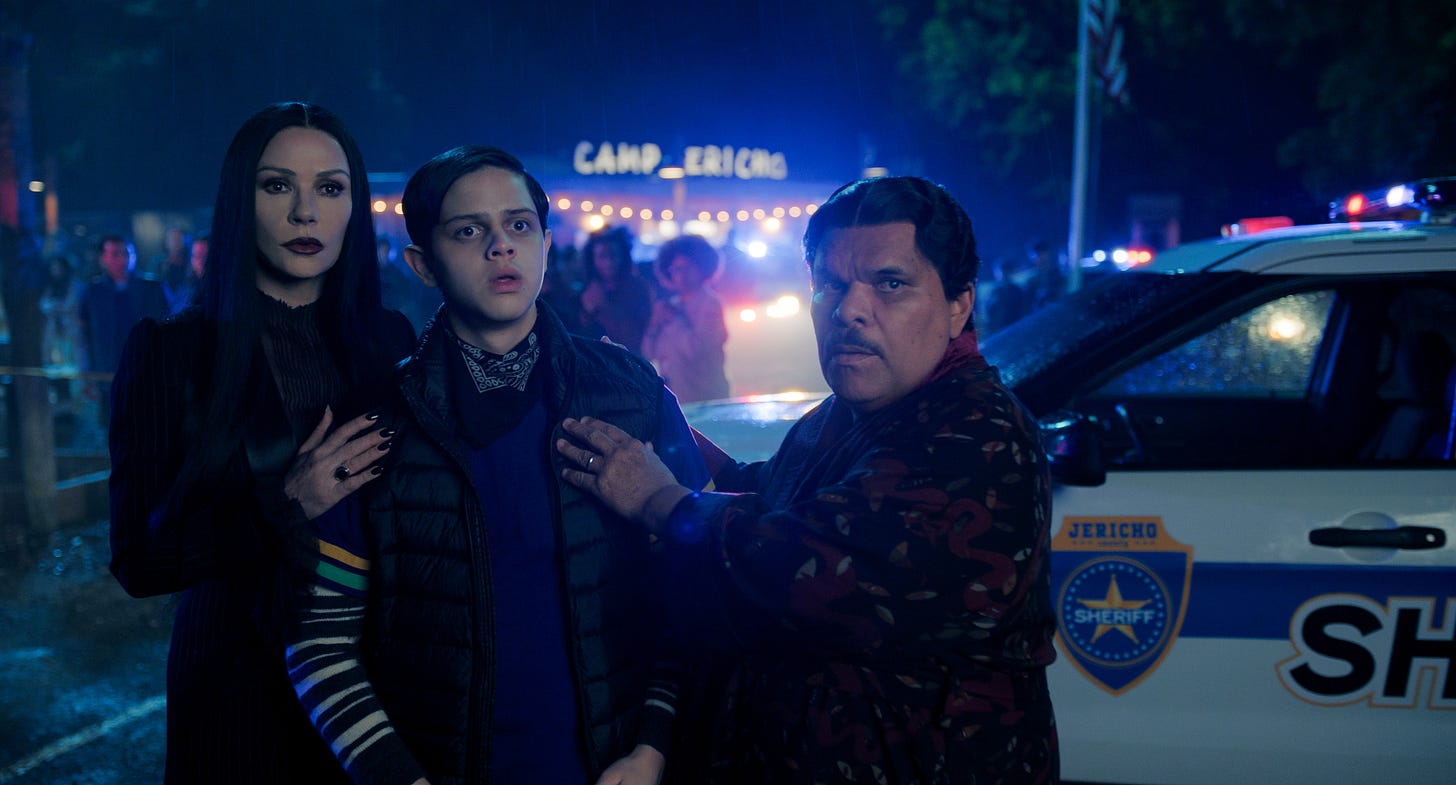
Last year, what looked at first to be another soulless Netflix spinoff about the sinister, serial-killer-obsessed daughter, Wednesday Addams, surprised many by becoming one of the streaming service’s most-viewed series to date. It was widely praised by critics and fans alike, flooding the internet with memes and references involving everything from weird dancing to cello music.
The series also changed a core premise of the Addams Family stories: the idea that they were a complete anomaly in American society. Previously, their strangeness was absolute. It was this strangeness that regular American society was measured against, and in this comparison, the satire of the Addams Family was built.
But the series introduced the term “outcast” to describe supernatural creatures or people with supernatural gifts. The Addams Family were no longer alone in their weirdness. Now, a whole minority of supernatural people and creatures, known to all and similar to the mutants in the X-Men comics, existed alongside regular people, or “normies.” With this came the chilling spectre of fear and prejudice. I admit that after having been introduced to the Addams Family in the 90s films as a young teenager, this change was jarring at first, as it seemed to water down the comedy that lay in this strangeness.
Now returning for her second year at Nevermore Academy after having (mostly) saved the school the year before, Wednesday Addams has become something of a celebrity among her fellow students and faculty. And she hates it. Yet, even as she would deny it, she has gained friends, most notably the overly cheerful werewolf Enid (played by Emma Myers). With Enid, she is quickly swept up in all manner of high school drama—much to her gloomy dismay. She has murders to solve, after all. Doesn’t she always? It seems to follow her.
Speaking of drama, there is also the family kind. Not only is her simple and malicious younger brother Pugsley (played by Isaac Ordonez) enrolling in the school this year, but her parents are also getting involved with school business, moving into a cottage nearby for the semester. Wednesday has long had a strained relationship with her mother Morticia (played by the perfectly cast Catherine Zeta-Jones) over her supernatural abilities, something her loving, but sinister, father Gomez (played by Luis Guzmán) tries his best to mend.
And when both her criminally insane Uncle Fester (played by Fred Armisen) turns up to cause mayhem and her Grandmama (played by the one and only Joanna Lumley), who doesn’t exactly see eye-to-eye with her own daughter Morticia, but loves and enables her granddaughter Wednesday in all manners of occult activities, chaos is sure to ensue.
There are other new faces too. Thandie Newton joins the cast as Dr. Fairburn of the local asylum. And since we lost the previous principal of Nevermore Academy last season, we have a replacement in none other than Steve Buscemi as the new head of the school, Barry Dort. His cheerful demeanor, colorful school sweaters, and focus on outdoor activities promise to be a special kind of torture for Wednesday. And knowing Buscemi as an actor, we might just get a bit of chaos from that corner too.
Based on the four episodes I’ve seen, the second season of Wednesday seems poised to go down a darker, more brutal, and sinister road. The humor is still there—some of it expertly timed, especially a small gag involving Pugsley, Lurch, and a bazooka. And while the high school drama might be slightly tiresome for some of us Gen X folks, it has its charms.
The series also seems to focus more on its side characters now, going deeper into their backgrounds and making them come alive, instead of them being mostly set dressing and recipients for Wednesday’s ire—although that still frequently happens—as they often were in the first season. This allows us into their lives and stories, making Nevermore Academy feel more vibrant and shedding the superficial nature of many characters from the first season. We’ve gotten to know them now, after all. If the first season was our clumsy and shy attempt at getting to know new people, like we all remember from our first days at a new school, they are now people we look forward to reuniting with after a long summer vacation.
With the second season, and a third already green-lit, Wednesday is sure to continue to charm, and maybe frighten, teens and young adults everywhere. While I still might not be overly fond of some of the more drastic changes from the original Addams Family stories—especially adding a whole section of the American population as supernatural beings, thereby losing some of the intended satirical elements—the show is definitely growing on me. Much of this has to do with how expertly the show is cast, with the Addamses themselves being portrayed by actors seemingly born to play them.
Still, I’m curious how long Netflix will manage to keep up the momentum of a series like this. Here’s to many more seasons, and perhaps stories, and maybe even spinoffs, that take place away from Nevermore Academy too. An old Addams Family fan can hope, right?
Like other recent Netflix releases, the second season of Wednesday is divided into two parts, with Part 1, consisting episodes 1–4, premiering on August 6. Part 2, consisting of episodes 5–8, will air on September 3.


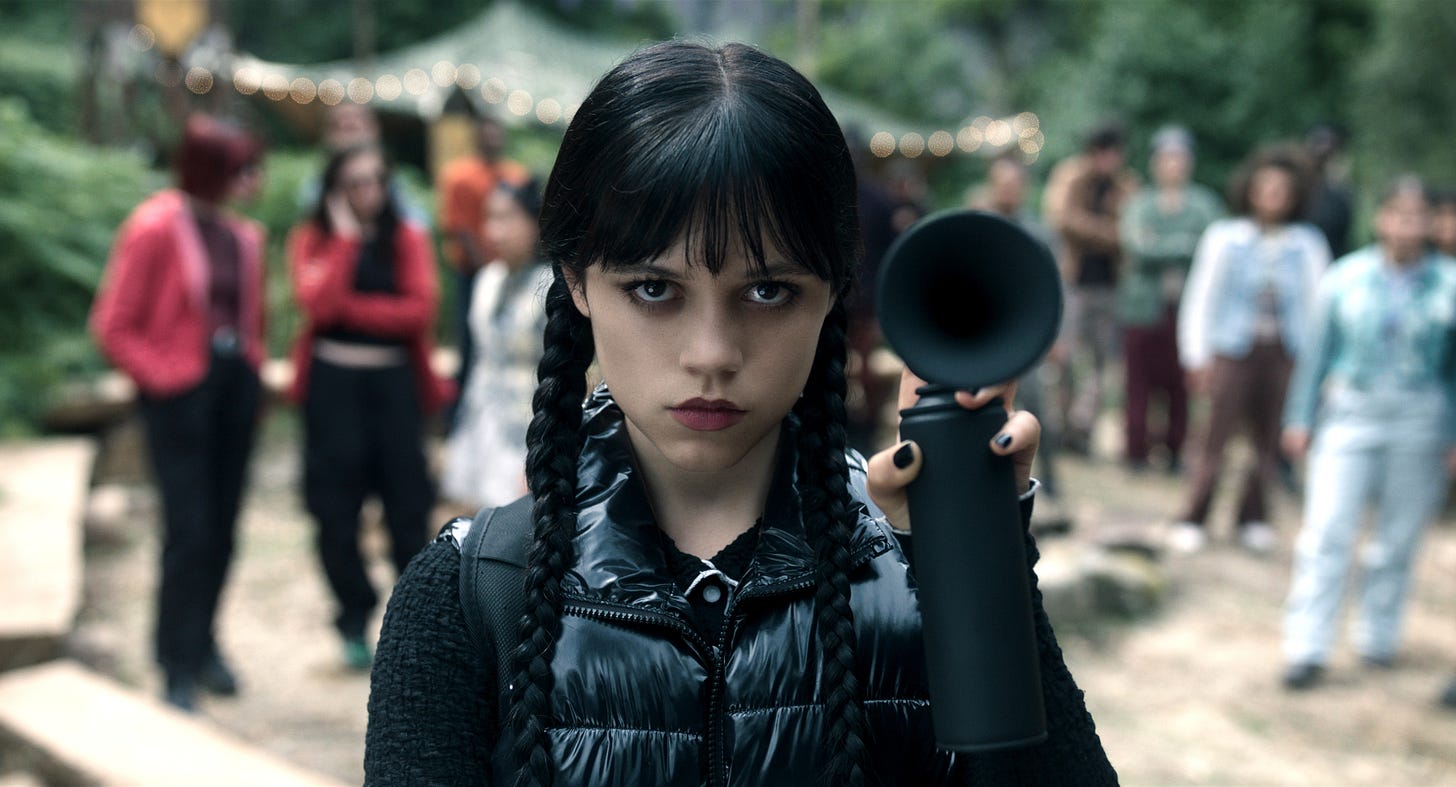
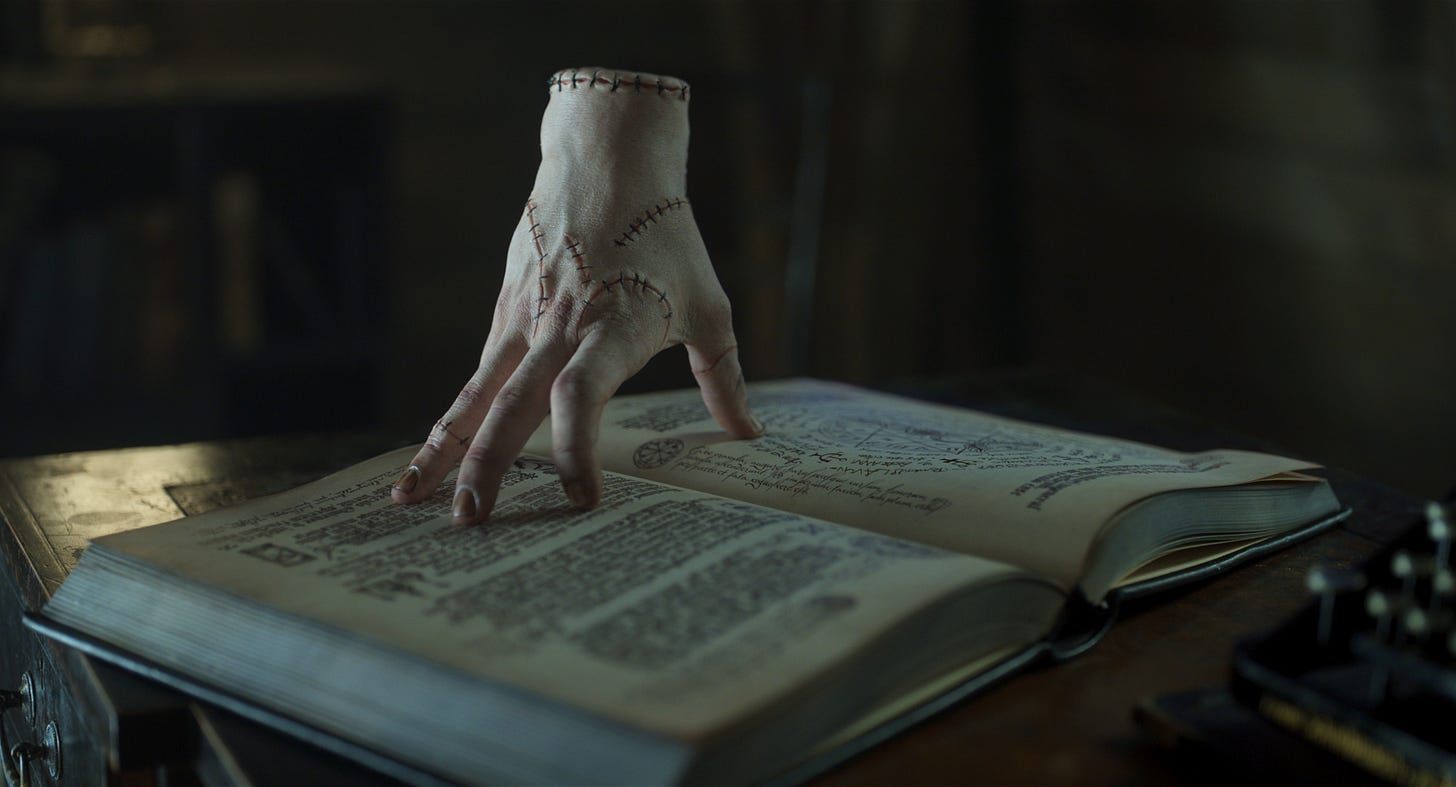
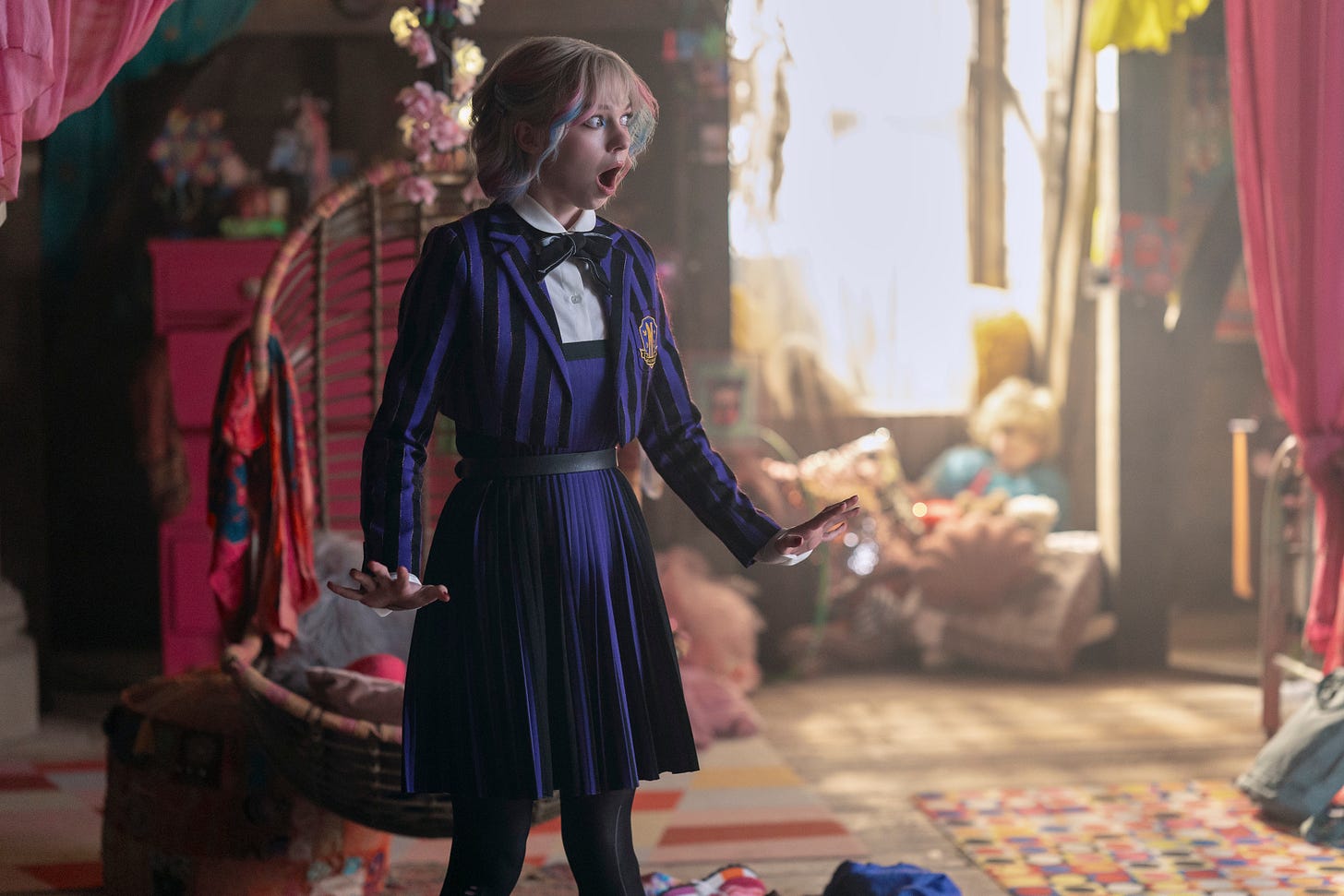
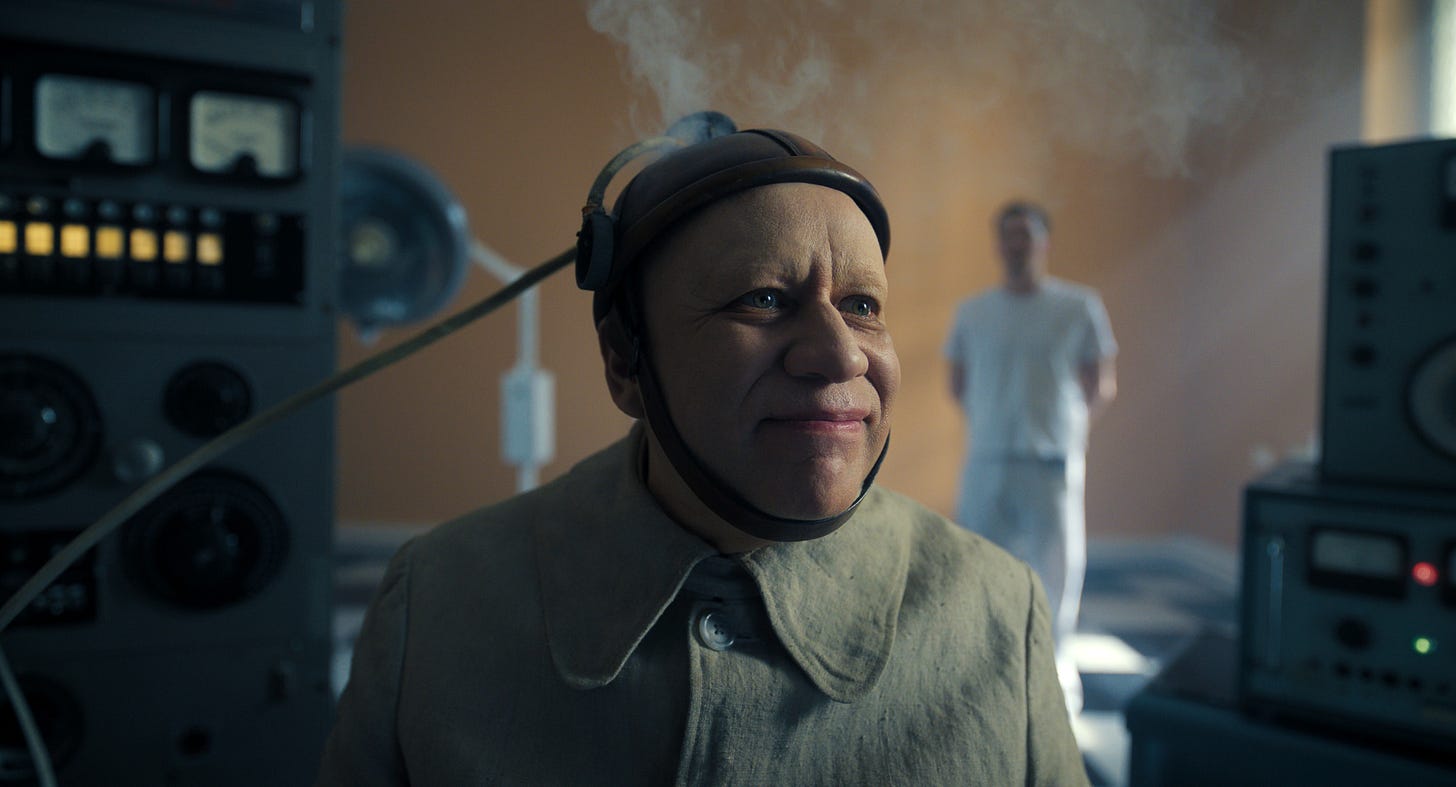
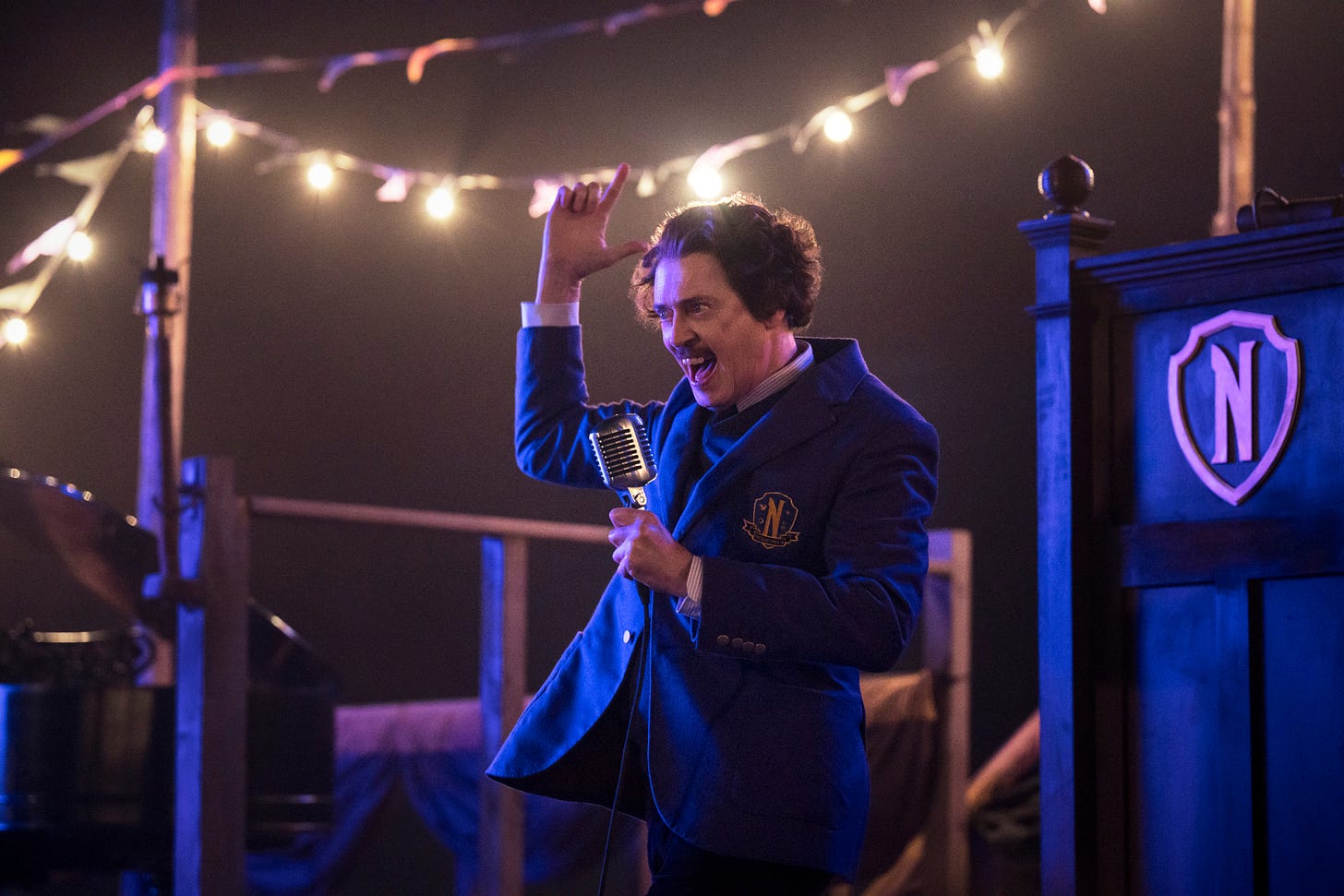
I finally finished season 2. I have mixed feelings but by the end they brought it together. I found Steve Buscemi’s character to be odious and unenjoyable but that may be my Gen-X tastes getting in the way. As subplots go, it felt a bit intrusive but it was nice to see the Siren’s getting some story time.
At the end of the day I love the Wednesday’s character and I look forward to more.